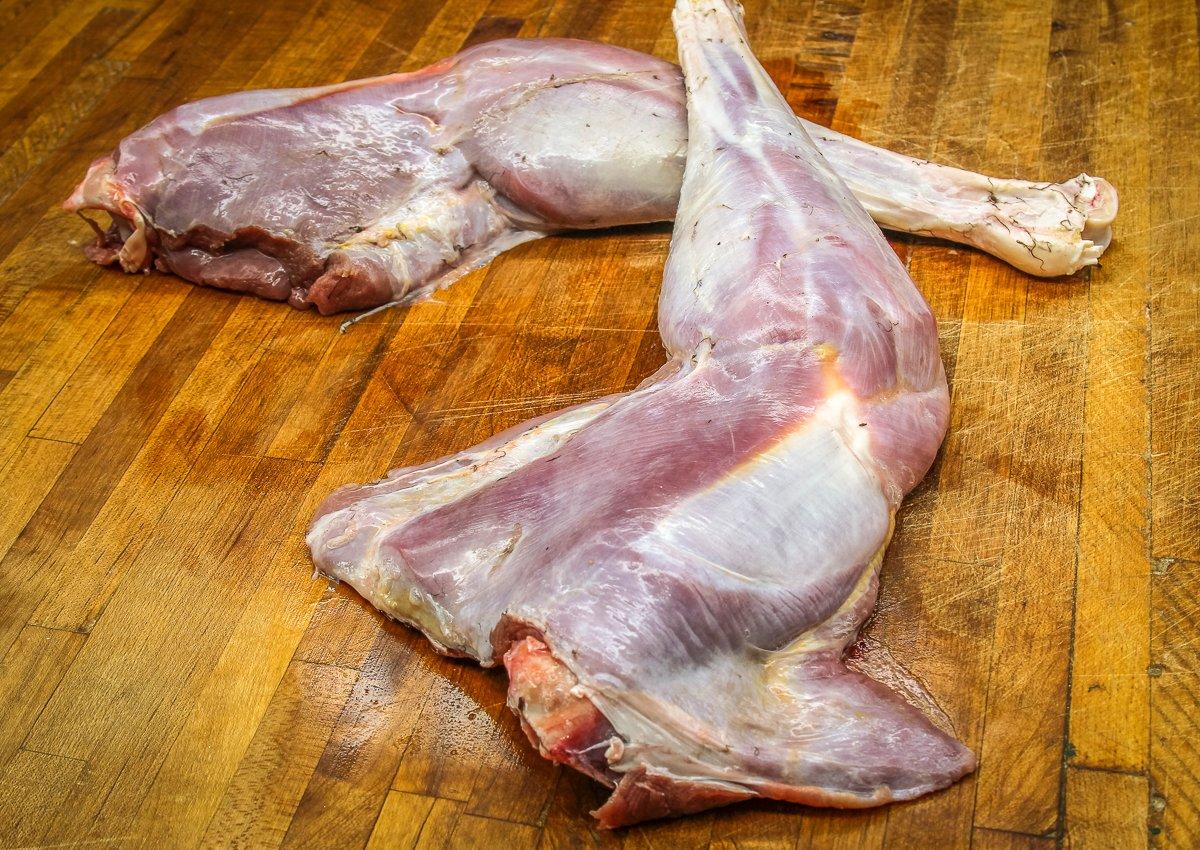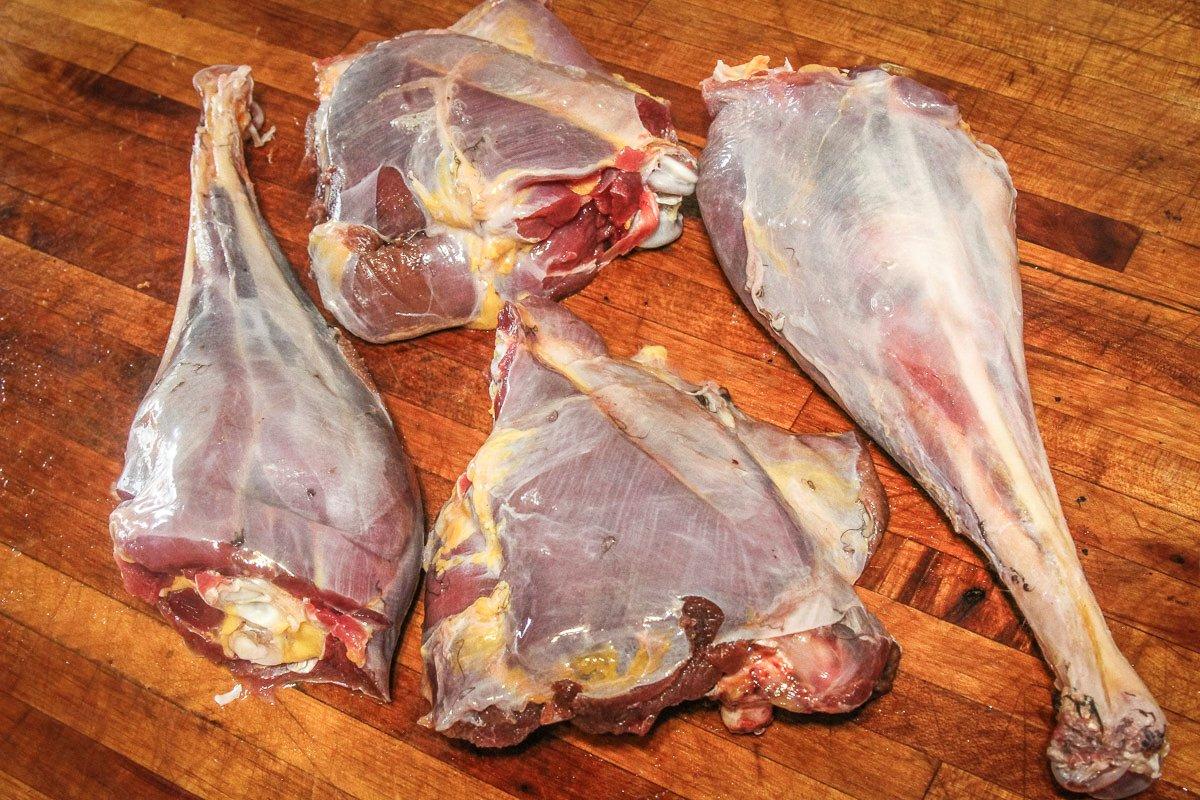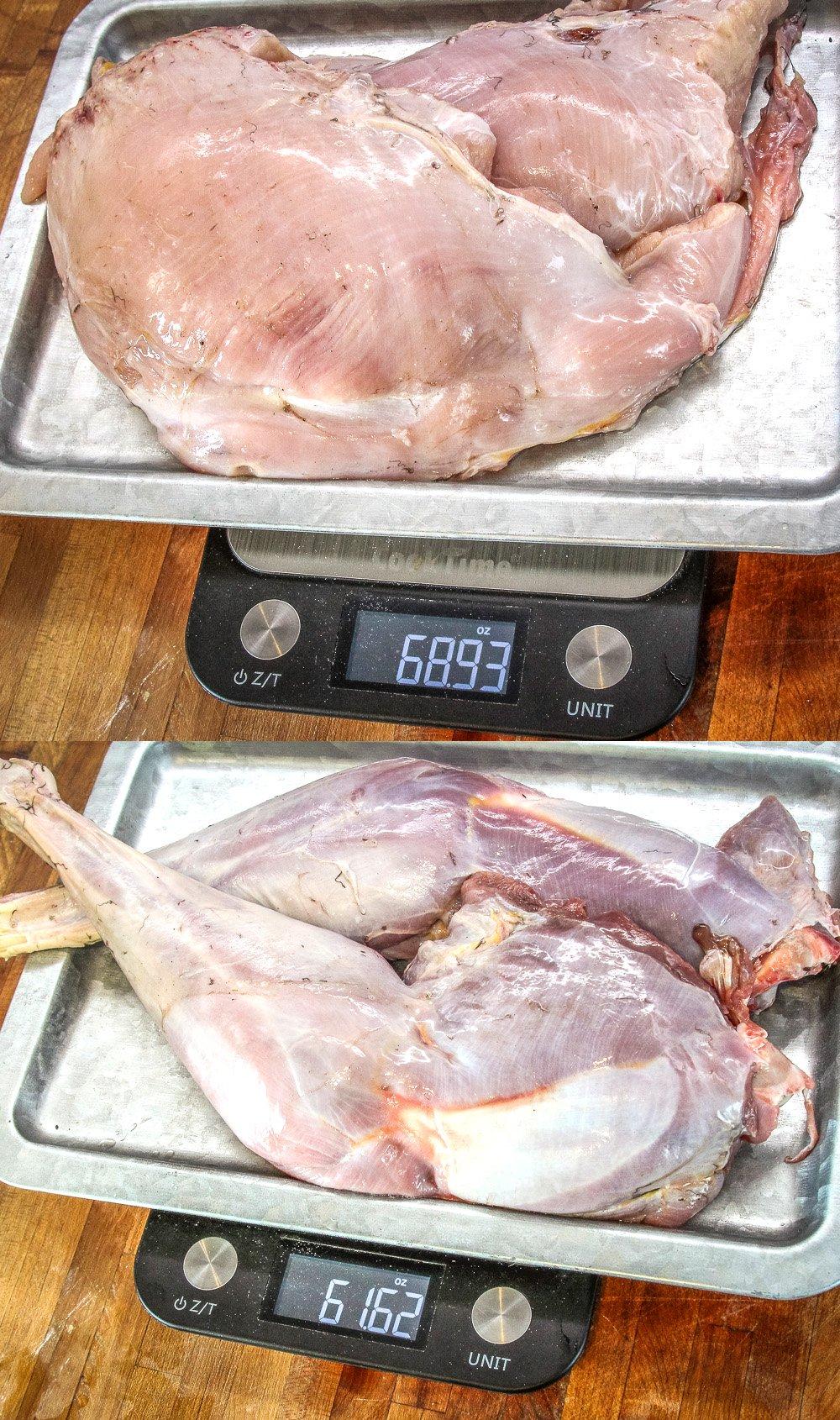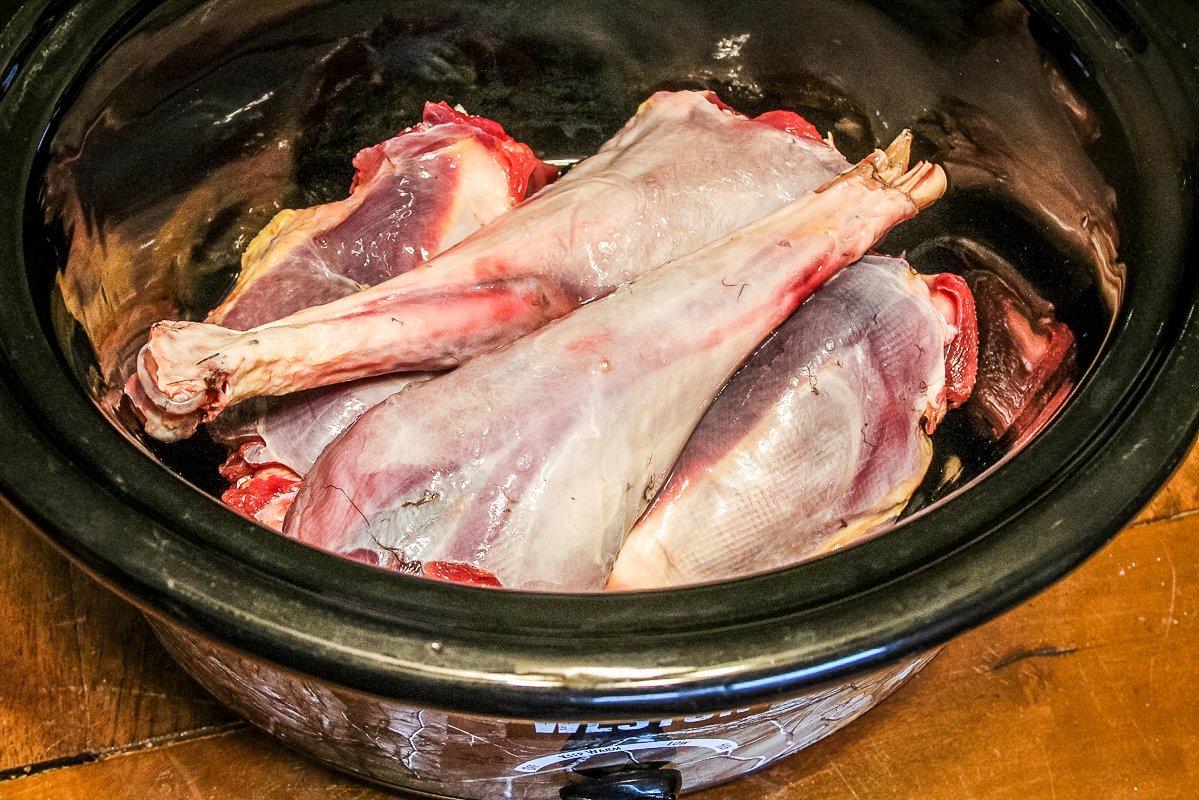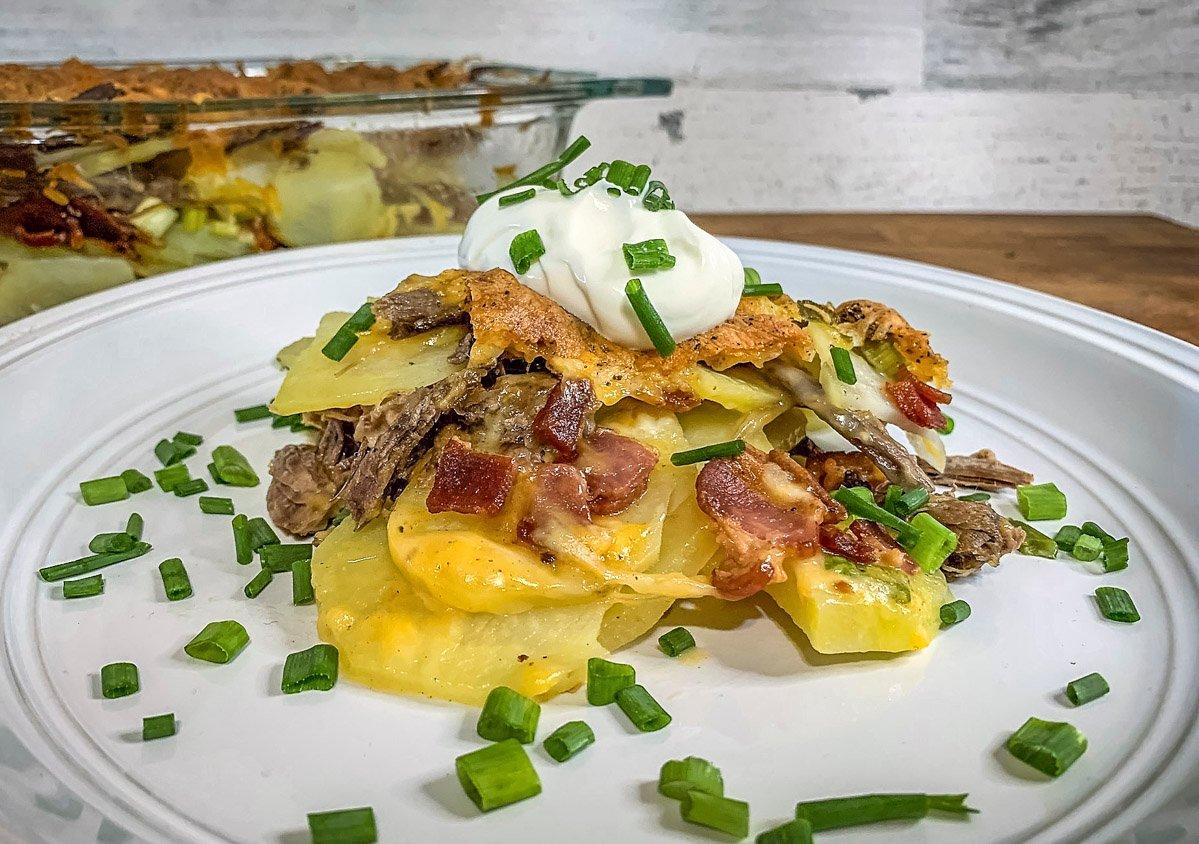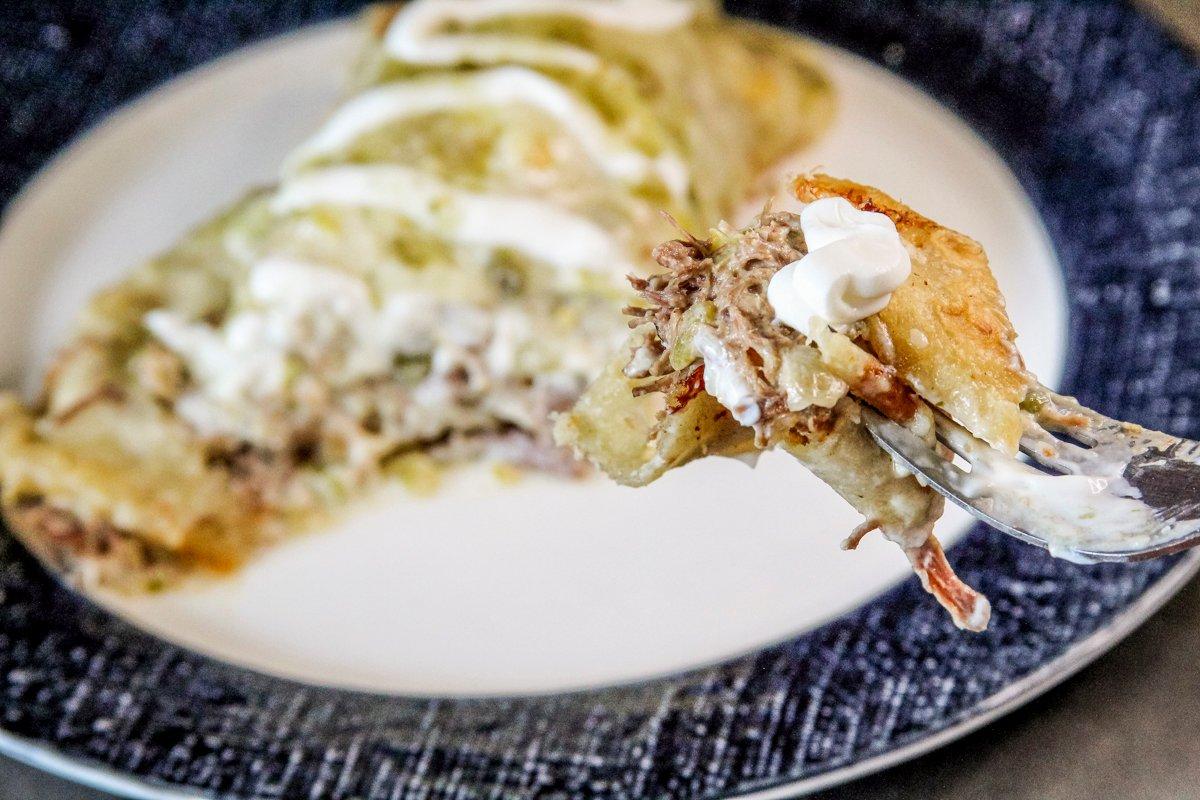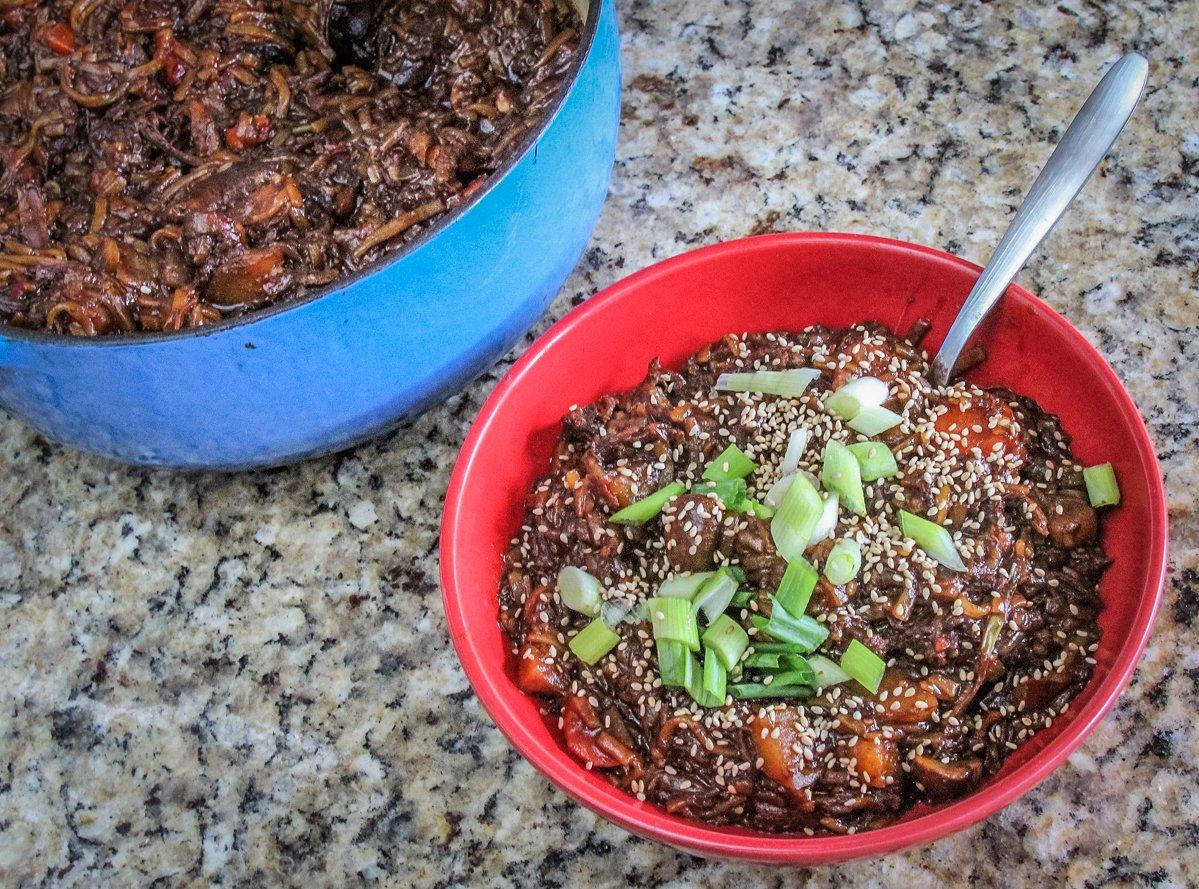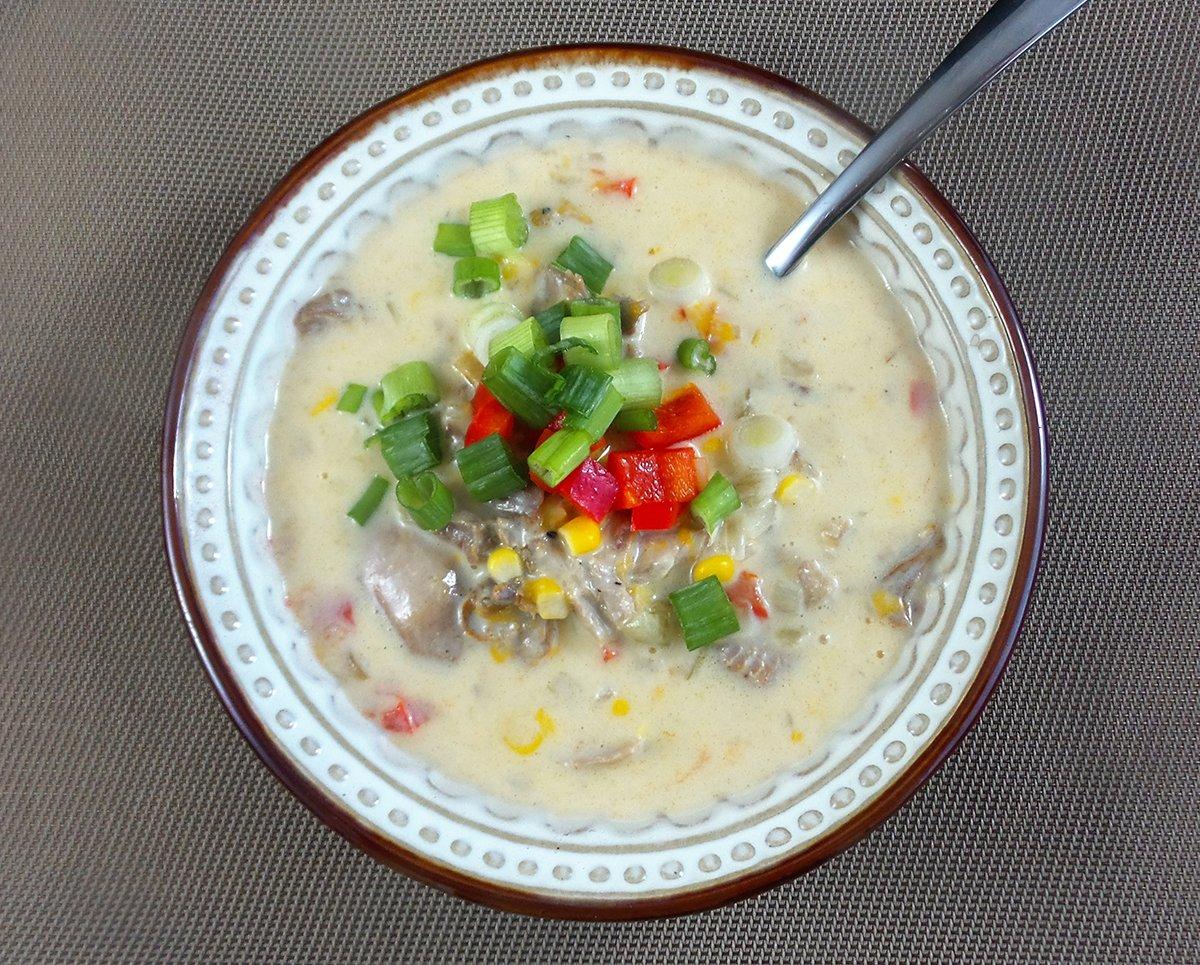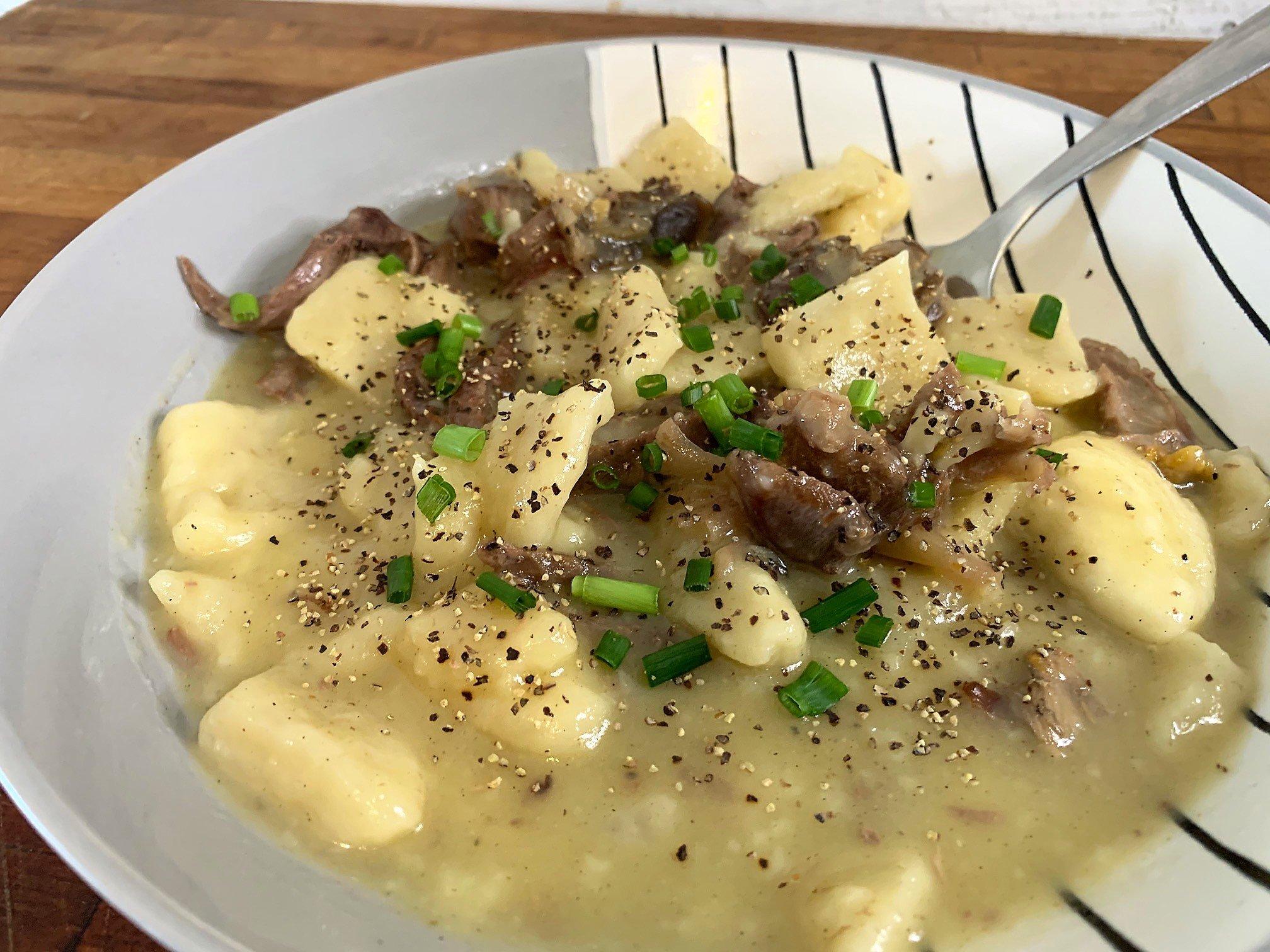Your complete guide to prepping and cooking wild turkey legs and thighs, plus a bunch of awesome recipes
They're tough. They're stringy. The tendons are a pain. They're hard to skin. They don't have much meat on them. They aren't worth the hassle.
Over the years, I've heard hunters use these and every other excuse for not keeping wild turkey legs. The good news is, none of them are actually true.
If you try to cook a wild turkey leg or thigh the same way you cook the breast meat, then, yeah, it will turn out as tough and chewy as that 3-year-old oatmeal pie you found in your turkey vest and tried anyway because you were miles from camp and starving.
Like all gallinaceous game birds, wild turkeys use their legs a lot. Way more than an animal equipped with a fully functioning set of wings should, really. That rich, dark-red muscle meat is held together by connective tissue and hard tendons. Cook them hot and fast, and that connective tissue knots up into a tight ball that even a hungry coyote would pass up.
The legs and thighs of a recently killed Kentucky longbeard weighed just a few ounces less than the breast from the same bird.
But cook them at a low temperature for a long time with plenty of moisture, and that's when the magic happens. That connective tissue melts away and the meat falls from the bones, leaving them clean and white. The results are tender, tasty, and perfect for all sorts of recipes.
Since turkey legs and thighs are similar in texture and flavor, and since they come off the turkey more or less in one piece, you can use them interchangeably in the recipes below. But before you can cook them, you have to get them off the bird. Check out the links below for some of our favorite recipes.
Butchering the Legs
Start with a sharp knife. Cut around the knee joint where the feathers meet the scaly lower leg. Give the joint a twist and you will be able to separate the two. If you're skinning the breast meat, just continue peeling the skin down the legs. You might need to help it along in a spot or two with your knife, but most of it should peel away like a sock from your foot. Grab the center of the carcass at the breastbone with one hand, and push down on the leg and thigh with the other. You should feel the thigh joint pop free from the backbone. All that's left is to work your knife along the bone at the top of the thigh to release the meat.
For storage, you can leave the leg and thigh together, or use your knife to separate it at the joint. I normally freeze both leg and thigh sets in a single package to feed my family of five, but you can freeze them individually if you don't normally need that much meat in a single meal.
So, how much meat can you get off a set of legs and thighs? About as much as the breast. Yes, you lose a bit of weight once the bones are removed, but even so, the legs and thighs of a recently killed Kentucky longbeard weighed just a few ounces less than the breast from the same bird. Saving the legs and thighs doubles the number of wild turkey meals you get to enjoy, and minimizes the waste.
Cooking Methods
1. Slow Cooking
This is my favorite way to cook wild turkey legs and thighs, mainly because it's a set-and-forget method. Add the legs and thighs to your Weston Realtree or other slow cooker, a bit of liquid like chicken or turkey broth, and seasonings to match your recipe.
Set your slow cooker and walk away. In about 8 hours, you will have tender, shreddable meat for casseroles, tacos, enchiladas, or pulled wild turkey BBQ.
By adding the appropriate seasonings to the slow cooker along with the turkey, you infuse the meat with flavor as it cooks. Try your favorite BBQ rub for pulled turkey sandwiches or soy sauce, garlic, and oyster sauce for Asian-inspired recipes. Or chili powder, cumin and peppers for Mexican-style dishes.
2. Simmering
Thinking about making soup or turkey and dumplings? Add the legs to a large stock pot, pour in enough stock or water to cover, add seasonings and bring the pot to a boil. Reduce the heat to a simmer and let the turkey cook for 3 to 4 hours or until the meat is tender. Remove the legs from the pot, cool long enough enough to handle, and shred the meat away from the bone with your fingers or a pair of forks.
Return the boned-out meat to the pot and add your soup ingredients to continue cooking. Vegetables, potatoes, rice and barley all work well with turkey.
In the mood for something a bit heartier? Mix a batch of these dumplings to add to the pot. The broth will thicken to a rich gravy as the dumplings cook. A big bowl of wild turkey and dumplings makes a meal everyone will love.
3. Braising
Braising simply means searing meat over high heat to brown, then slowly cooking it in a flavorful liquid like wine or stock. A Dutch oven is the perfect vessel for braising. Braising works best when you break down the leg and thigh sections for more surface area to brown.
Start the pot over medium-high heat on the stove. Add a few tablespoons of vegetable or olive oil. Season the turkey with salt and pepper, then brown the pieces in the hot oil for a few minutes per side until the surface is golden. Remove the turkey from the pot and add aromatic vegetables like onion, carrots, and celery. Pour in the cooking liquid and stir the pot firmly with a wooden or plastic spoon to loosen any stuck-on bits from the bottom of the pot.
Return the turkey to the pot and cover it with a tight-fitting lid. Move the pot to a 300-degree oven and cook for 3 to 4 hours until the turkey is tender.
4. Smoking
Want to smoke the legs and thighs? Start by seasoning your turkey well with your favorite BBQ rub. Place them on the smoker at 225 degrees over hickory chips or a mixture of hickory and a fruit wood like apple, peach or cherry.
Smoke the turkey on the open grate for 2 to 3 hours. Next, use heavy-duty aluminum foil to wrap your turkey. Add liquid (like beer or apple cider) and a bit of butter, then seal the foil tightly and place it back on the smoker for another 2 to 3 hours. After that, remove the turkey from the foil, place it back on the open smoker, and brush with your favorite sauce. Turn the heat up to 300 degrees and cook for 30 minutes, brushing with sauce every 10 minutes or so, to set the glaze.
5. Grinding
This is the lone method where you don't have to cook the turkey slowly. Wild turkey legs and thighs are perfect for boning out and grinding with your favorite seasonings for grilled turkey burgers or turkey breakfast sausage.
Start with the raw turkey legs and thighs, and use a sharp filet knife to remove the meat from the bones. Remove as much of the tendon and connective tissue as possible. Add BBQ seasoning to the deboned meat and run it through a meat grinder on the medium plate. Chill the ground meat and run it through the grinder again. Form the ground turkey into patties and grill or fry to your liking. Dress and serve like your favorite beef burger.
For breakfast sausage, follow the same steps, but substitute sausage seasonings like salt, pepper, red pepper and sage to the blend. Fry up and serve alongside eggs for a hearty camp or home breakfast.
Wild turkey legs don't get the respect they deserve. When prepared with an appropriate cooking technique, they are just as delicious as breast meat. Spend the extra five minutes or so it takes to remove the legs from your next turkey, and try one of these techniques. Once you realize just how good the legs can be, you'll never leave them behind again.
Photography and food styling by Cheryl and Michael Pendley.

